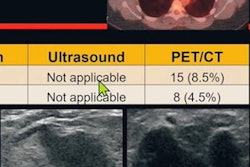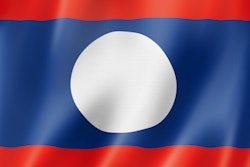
Breast cancer incidence is rising all over the world, especially in developing countries, where its epidemiological features differ from those in Western countries, according to a study in the European Journal of Cancer that used North African countries as an example.
In developing nations, the age at onset of breast cancer is younger, the disease is more aggressive, and some rare forms of the disease, such as male breast cancer, are more common.
The underlying causes of these features have not been thoroughly explored to date and raise questions among clinicians, according to the study authors, who offered some clarification of the differences (Eur J Cancer, July 2014, Vol. 50:10, pp. 1808-1818).
North Africa
Researchers affiliated with educational institutions in Algeria, Belgium, France, and the U.S. used five countries in North Africa (Morocco, Algeria, Tunisia, Libya, and Egypt) as a sample to describe the unique features displayed by breast cancer in developing regions. They compared their findings with similar information from France and the U.S.
"These risk factor profiles result from rapid changes in reproductive habits and are common to many developing countries," wrote lead author Marilys Corbex, PhD, from the Institute of Tropical Medicine in Antwerp, Belgium, and colleagues. "Thus the features of breast cancer observed in North Africa are likely to be observed in other regions of the world."
The researchers collected information on breast cancer from registry reports, unpublished data, private notes, and personal correspondence, and they also searched Medline, Embase, Scopus, Biological Abstracts, Popline, and African Journals Online. The group included documents in English and French and those published since the 1970s.
In North Africa, breast cancer is the most common cancer among women, representing 25% to 35% of all female cancers, Corbex and colleagues found. Even though recent pilot mammography screening initiatives have been carried out by governments in Morocco, Algeria, Tunisia, and Egypt, they have covered only a very small fraction of women. For example, the largest program that took place in Egypt screened 21,000 women, representing 0.25% of the eligible population (women older than 45 years).
Contrary to what is observed in Western countries, in North Africa breast cancer appears to be predominantly a disease of young women, according to the authors. In Egypt and Morocco, the incidence of breast cancer is higher in women 45 to 49 years of age than in women 65 to 69, and trends are similar for the other North African countries. Some 50% to 60% of patients in North African countries are younger than 50, while in France and the U.S. that proportion is around 20%.
This large proportion of young patients creates the misleading notion that breast cancer affects women at a younger age in North Africa than in Western countries; however, the incidence of breast cancer among women younger than 40 in North Africa is similar to that in France or the U.S., the incidence among women 40 to 50 is lower, and the incidence among women older than 50 is considerably lower.
"This difference reflects a cohort effect: In North Africa women currently in their 70s have a much more favorable risk profile than women in their 40s; they gave birth to more children, had them much earlier, and breast fed them for a longer time," they wrote. "Such a cohort effect is also visible for the U.S. and France 25 years and 10 years, respectively, before North Africa."
Also, mass screening of women older than 50 years of age in the U.S. and France helps widen the gap with North Africa, according to the authors.
Meanwhile, male breast cancer appears to be more frequent in North Africa than in Europe or the U.S., and various causes, including genetic ones, have been suggested to explain this higher frequency. However, while the percentage of male breast cancer among all breast cancer is higher in North Africa (Egypt, 1.6%; Algeria, 2.8%) than in France (0.8%) or U.S. whites (0.7%), this is due to the relatively low incidence of female breast cancer and not to a higher incidence of male breast cancer, the researchers found.
More aggressive cancer?
Many publications have reported a more aggressive form of breast cancer in North Africa; however, because disease aggressiveness decreases with age, the younger age of cancer patients in North Africa may be influencing this finding, Corbex and colleagues noted.
To understand the problem in more detail, the researchers reviewed data for two aggressive forms of disease: inflammatory breast cancer and triple-negative breast cancer.
Historically, high proportions of inflammatory breast cancer were reported -- up to 59% in a Tunisian cases series in the 1970s -- but trends since then reveal a decreasing incidence to less than 10%. This decline could be due to the use of more stringent criteria for diagnosis, a trend toward earlier diagnosis, and the country's improving socioeconomic level, the authors wrote.
"If inflammatory breast cancer cases represent 10% of the patients in North African series, then incidence should lie between 2 and 4/100,000, which is not notably different from what is observed in the U.S.," they wrote.
The specific features of breast cancer in North Africa stem mainly from risk factor profiles that differ from those observed in Western countries, and which result in fewer postmenopausal women being affected, the authors noted. These risk factors will continue to evolve, and after a few decades, they may align with those seen in Western countries.
In the meantime, there is a need to allocate resources for early detection, treatment, and palliative care, they cautioned.
"The large proportion of young cases advocates against the sole use of mammography screening to ensure early detection, since in women less than 50 this approach has been suggested to cause more harm than benefit," the authors concluded. "The relatively high frequency of the aggressive form of the disease, which necessitates costly chemotherapy treatments, needs to be considered when planning treatment/health insurances resources."



















